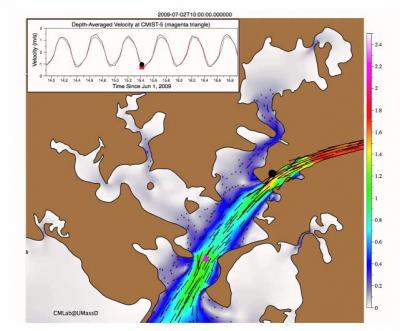Intertown sewer system could reduce pollution
A proposed regional sewer and wastewater treatment solution, in which Wareham’s sewer plant would treat waste from Bourne, Wareham, Plymouth, Marion and Mass Maritime Academy before releasing cleaned, treated water at an outfall pipe owned by Mass Maritime directly into the canal, was presented at Jan. 26 Bourne Board of Sewer Commissioners meeting.
Scientists from the Buzzards Bay Coalition, Mass Maritime and the Woods Hole Oceanographic Institute said that the proposal would eliminate 90,000 pounds of nitrogen each year from Buzzards Bay. Nitrogen is one of the primary contaminants from wastewater, which has devastating effects on water quality and the flora and fauna in the ocean.
The project would utilize Wareham’s sewer facility, which Korrin Petersen of the Buzzards Bay Coalition said out-treats every other sewer system in the region, removing 95 percent of the nitrogen from water before it is released.
Currently, the plant discharges treated water into the Agawam River. The river is fairly sensitive, so the amount of treated water that can be released there is limited.
By moving the release site to the Canal and expanding the plant, Wareham would be able to treat far more sewage.
Scientists estimate that if this plan goes ahead, about 3.5 million gallons of treated water would be released at the outfall pipe in several decades.
The greatest reduction in nitrogen would come from expanding sewerage to homes in Bourne, Plymouth, and perhaps, Marion. Septic systems do not treat for nitrogen.
To model the effects of the proposal, the Buzzards Bay Coalition recruited several scientists. The group already has a great deal of data about the current water quality from measurements at many sites dating back to 1992.
Jim Churchill of WHOI developed a hydrodynamic model which models where the water discharged will travel on the currents. Churchill said that most of the water will quickly dilute as it exits the outfall pipe. Most will travel directly into the canal, and less than one percent will make it to the more sensitive inner estuaries north of the canal.
Churchill said that even if 10 million gallons of water were released there -- a worst-case scenario -- the increase would be “tiny.”
Bill Hubbard of Mass Maritime Academy set up long-term monitoring stations around the bay where he will keep an eye on the eelgrass and black mussels to make sure those organisms aren’t struggling.
Petersen said that the proposal was designed at the behest of the communities involved to make use of existing resources -- Wareham’s treatment plant and Mass Maritime’s outfall pipe -- while improving the water quality in the bay.

















